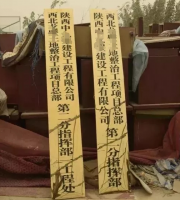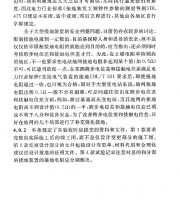(5) Welding or overlapping of reinforcement and prefabrication and assembly of pier with wet joint to extend a certain amount of reinforcement in advance so as to overlap with the reserved reinforcement of adjacent components.
The prefabricated column pier system decomposes the pier into several components, such as cushion cap, column, capping beam (pier cap), etc., which are prefabricated in the factory or on site, and then transported to the site to assemble the pier.

However, they have relatively high requirements for transportation and hoisting machinery and equipment.
(6) Socket type connection Socket type joint connection structure is to insert the prefabricated pier shaft into the reserved hole corresponding to the foundation.
Compared with grouting sleeve, metal bellows, etc., it has the advantage that the required construction tolerance can be larger, and a certain amount of concrete needs to be poured on site.
The contact surface between the pier shaft and the bent cap or the cushion cap is usually a mortar cushion, and the epoxy joint structure is used between the pier shaft sections, as shown in Figure 5.
In order to achieve the full promotion and application of full prefabricated column technology, it is necessary to conduct in-depth research on the seismic performance of prefabricated column.
Its mechanical properties under normal use conditions are similar to those of traditional cast-in-place concrete piers, so it has certain economic advantages.
At present, a few bridges in foreign countries have been constructed with this connection structure, which is rarely used in high seismic risk areas.
Commonly used assembly joints are as follows:.
From the perspective of rapid construction, this scheme has some shortcomings.
The structure is characterized by high construction accuracy requirements, short on-site construction time, and no need to tension prestressed tendons.
The construction procedures mainly include prefabricated components, installation and connection, and concrete joint filling.
A certain thickness of mortar is laid at the bottom, and the surrounding is filled with semi dry concrete.
The prefabricated pier connected with bonded prestressed reinforcement has the same deformation capacity as the cast-in-place concrete pier, but the energy consumption capacity is weak..
The protruding reinforcement is connected by grouting sleeves.
The disadvantage is that the cost of the pier shaft is much higher than that of the traditional cast-in-place concrete pier.
The prefabricated pier shaft connects the reinforcement protruding from the pier shaft through the grouted metal corrugated pipe embedded in the bent cap or the cushion cap.
The advantages are simple construction procedures and less on-site operations; The disadvantage is that the mechanical behavior of the joint, especially the seismic performance, needs further study.
From the application experience abroad, low seismic hazard areas have been widely used, while the application and scientific research in high seismic hazard areas are still in progress.
Beijing Jishuitan Bridge in China is built with this connection structure, and some bridges in the United States are also built with this connection structure.
The assembling joint is a key process, which should be firm, safe and simple for construction.
(2) Grouting sleeves are used to connect prefabricated pier shaft segments.
The main feature of prefabricated piers and abutments is that they can be prefabricated in the prefabrication yard with little interference from the surrounding environment.
The insertion length is generally 1.2~1.5 times of the pier shaft section size.
The structure is characterized by that the prestressed steel bars pass through the joints, which are widely used in practical projects, and the design theory, calculation analysis and construction technology experience are mature.
Seismic performance of prefabricated column The seismic performance of prefabricated column is a technical problem that hinders the application of full prefabricated column technology in bridges in high seismic hazard areas.
When using this structure to build piers, the mechanical properties are often similar to those of traditional cast-in-situ concrete piers, but the presence of wet joints will increase the construction time and the amount of on-site reinforcement overlapping and pouring operations.
The test results show that the bridge pier with the prefabricated and assembled connection structure of coupler and double pipe has similar seismic performance compared with the traditional cast-in-place concrete bridge pier, which can meet the requirements of the expected seismic performance.
At the same time, the on-site construction requires tensioning and grouting of the prestressed reinforcement.
Don’t you come to learn it quickly? 1.
(4) Slot type connection Slot type connection structure, as shown in Figure 6, has been used in some bridge projects, mainly for the connection between pier shaft and bent cap, pile and cushion cap.
Through the quasi-static test and finite element numerical analysis on the prefabricated column specimens of different construction details, the hysteretic characteristics Ductile deformation, nonlinear mechanical behavior of joints, damage and failure mechanism, etc.
Taking the typical actual pier structure as the prototype, the low cycle repeated horizontal loading scale test research on the prefabricated column of rectangular solid section is carried out by selecting three prefabricated assembly connection modes of coupler, double and bonded prestressed reinforcement.
Temporary support is required, and the connection part of reinforcement shall be connected by post pouring concrete (wet joint), which is also the design idea of segmental assembly of pier widely adopted in China at present.

(3) Grouted metal corrugated pipe connection This connection structure is commonly used for the connection between the pier shaft and the cushion cap or between the pier shaft and the bent cap.
The construction process is complex and the construction time is long.
How its seismic performance is still under study.
As shown in the figure.
The on-site construction time of this structure is short, but it needs to meet the requirements of sufficient anchorage length of longitudinal reinforcement, and its mechanical properties are similar to those of traditional cast-in-place concrete piers.
Fabricated pier and abutment construction Fabricated pier and abutment are used to divide tall piers and abutments into several components along the vertical direction, according to a certain modulus, and horizontally, place them on the prefabrication yard around the bridge site, transport them to the site by vehicles and ships, and lift them for assembly.
The contact surface between the pier shaft and the bent cap or cushion cap is usually made of mortar cushion, and the epoxy joint is used between the pier shaft segments.
Source Baidu Library With the development of external prestressing technology and the emergence of problems such as corrosion of internal prestressing tendons, the prefabricated construction method is becoming more and more popular in China.
The on-site workload is significantly reduced.


